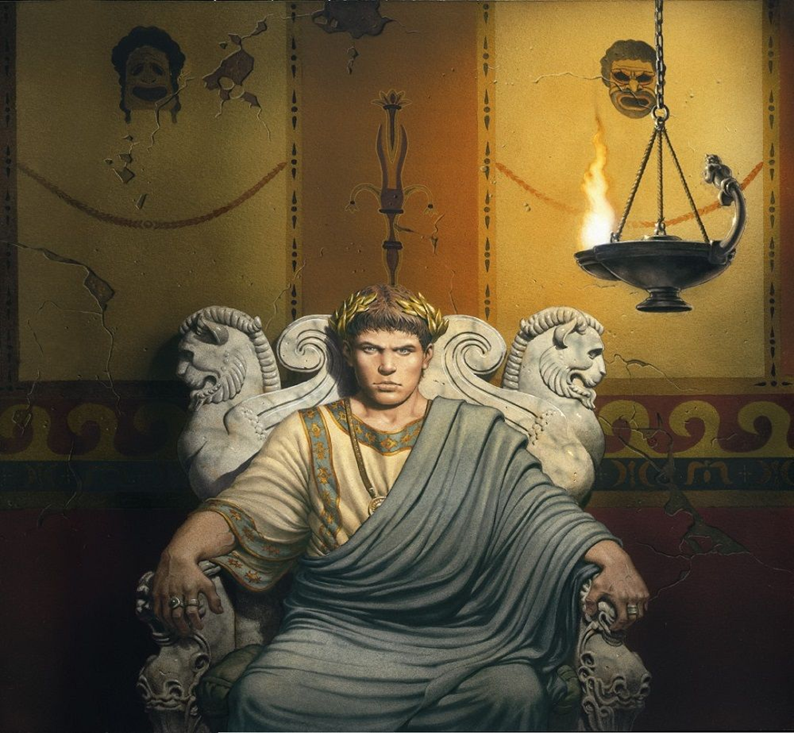Nero and Herod, the Magi, and slaughter of innocents

by Damien F. Mackey
Nero, again like Herod, is found slaughtering many innocents.
It is to be expected that an event as cosmically significant, and indeed as colorful, as the Magi’s pilgrimage to Jerusalem and Bethlehem, to behold and pay homage to the Christ Child, the King of the Jews, would resonate in many world literatures and traditions.
The Three Magi – Library of Rickandria
For instance, I have followed Holger Kersten’s perceptive likening of the Magi incident with a famous Buddhist tradition, in my article:
Magi incident absorbed into Buddhism? – Library of Rickandria
There is an example of a much earlier appropriation of Matthew’s Gospel than this in an event supposedly occurring during the reign of the emperor Nero:
Star of Bethlehem VI: Kings or Magi? – Open Space Science
Nero Claudius Caesar Augustus Germanicus (/ˈnɪəroʊ/ NEER-oh; born Lucius Domitius Ahenobarbus; 15 December AD 37 – 9 June AD 68) was a Roman emperor and the final emperor of the Julio-Claudian dynasty, reigning from AD 54 until his death in AD 68.
To seal Roman control over Armenia, Nero gave the throne of the country to King Tiridates, but obliged him to travel to Rome to accept it.
Tiridates I (Parthian: 𐭕𐭉𐭓𐭉𐭃𐭕, Tīridāt; Ancient Greek: Τιριδάτης, Tiridátes) was King of Armenia beginning in 53 AD and the founder of the Arsacid dynasty of Armenia. The dates of his birth and death are unknown.
Tiridates traveled with an entourage of three thousand who, by all accounts passed along their route like a plague of locusts, obliging the countries and provinces that they crossed to feed and support them.
all describe the visit in their histories, with Pliny being cutting in his references, accusing Nero of:
“carrying out all kinds of stupidity”
but making the interesting comment in Historia Naturalis, 30:6, 16-18:
“Magus ad eum Tiridates venerat Armeniacum de se triumphum adferens et ideo provinciis gravis… quaereat aliquis, quae sint mentiti veteres Magi.”
“The Magus Tiridates came to his court… and, with him, brought other Magi.”
Tiridates knew his role well and greeted Nero with the words:
I have come to you, my god, who I have worshipped like the Sun.
….
Though this supposedly historical incident is taken by some to have been the inspiration for Matthew’s account, I would have it the other way around – a pagan non-history appropriating the Gospel story.
Nero, again like Herod, is found slaughtering many innocents:
Nero: monster or maligned? – The Past
Another incident involving the slaughter of innocents concerns the murder of a leading senator in AD 61.
‘The senator was killed in his house’, Thorsten says, ‘and an ancient law stipulated that all of the household slaves should be executed to set a deterrent.
There were 400 slaves in the house, so in an extreme case that would mean 399 of them were innocent.
Debates were held in the Senate, and the younger senators felt this punishment was too harsh, but the old Senate leaders insisted on upholding the law.
The plebs come out in support of the slaves, but Nero ended up backing the senators who wanted to follow the law.
They were from key senatorial families who wanted power for themselves.
Among them was one of the leading men of the Senate, and his son-in-law was Corbulo:
the main Roman commander in the East. …’.
For further connecting between Nero and Herod, see e.g. my article:
King Chilperic I a ‘Nero and Herod’
SAUCE
Nero and Herod, the Magi, and slaughter of innocents
